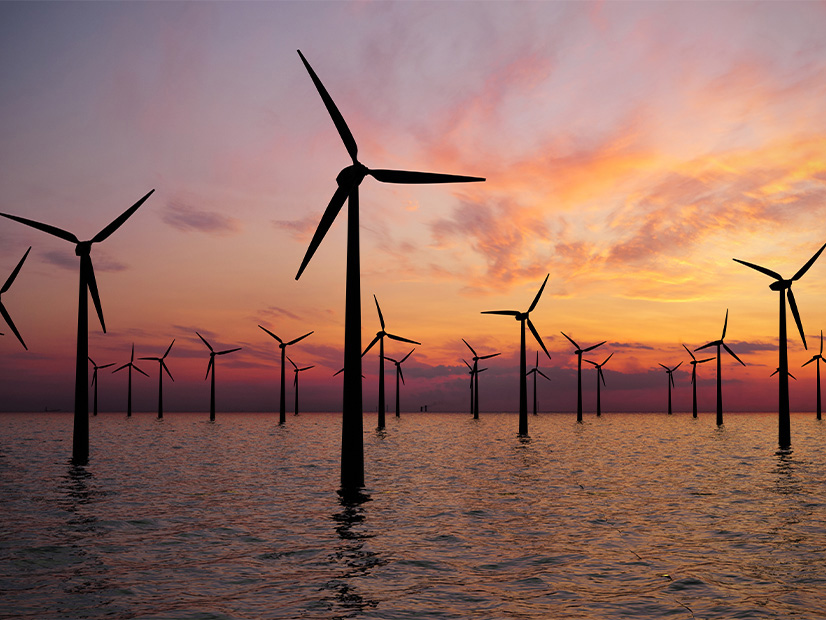
Public Service Enterprise Group (NYSE:PEG) is mulling whether to remain a 25% partner with Ørsted in the Danish developer’s Ocean Wind 1 project in New Jersey, CEO Ralph LaRossa said Monday as he laid out the company’s future clean energy plans in its third-quarter earnings call.
The company acquired the share shortly after the New Jersey Board of Public Utilities (BPU) in 2019 picked Ørsted’s 1,100-MW project to be the state’s first offshore wind project. LaRossa spoke in his first earnings call since he took over from his predecessor, Ralph Izzo, on Sept. 1.
“We are approaching a final investment decision [FID] on Ocean Wind 1 in New Jersey to determine if we will proceed to the construction phase,” LaRossa said. “We are reviewing our options related to our 25% equity investment as well as our option to purchase” 50% of Ørsted’s Skipjack Wind 2 project in Maryland, he added.
On Ocean Wind, “one of the things we’re looking at there is where the costs come in, and what that project looks like from an investment standpoint,” he said. Also part of the consideration are changes in revenue and expenses, he said. Under questioning from investment analysts, CFO Dan Cregg said there is no date stipulated in the contract for the decision.
An “FID moves you to the construction phase of the project, and so it’s when things are ready to move to that phase,” he said. Company officials gave no indication as to whether they would withdraw from the joint venture or remain as a partner.
Offshore Transmission Opportunity
LaRossa said that despite the fact that the BPU last week awarded PSEG only a small part of the work to upgrade the state’s transmission system in preparation to handle energy from the offshore wind projects, the utility believes that it could still get a substantial share of future work.
The BPU on Wednesday voted unanimously to spend $1.07 billion on transmission upgrades to deliver 6,400 MW of offshore wind generation to the PJM grid, saying the projects would minimize costs, environmental impacts and permitting risks (QO20100630). The BPU made its selection from among 80 proposals submitted by 13 developers in response to a solicitation issued by PJM at the BPU’s request under FERC Order 1000’s State Agreement Approach. (See related story, NJ BPU OKs $1.07B OSW Transmission Expansion.)
Among the submissions for the solicitation were proposals by PSEG individually and the Coastal Wind Link, submitted with Ørsted, which would use an offshore mesh system to transmit electricity onshore. Rizzo in May said PSEG could potentially secure projects costing $3 billion under the solicitation, although he also acknowledged the company may also get nothing. (See PSEG Sees Potential $3B OSW Transmission Spending.) LaRossa said that based on the contracts awarded last week, the offshore work potentially available to the PSEG-Ørsted partnership could be between $2 billion and $7 billion.
“We remain optimistic that our emphasis on reliability and resiliency will keep it as a strong contender for any future offshore transmission solicitations to bring regional offshore wind projects onshore,” he said. If the company did pull out of the Ocean Wind 1 project, it potentially could invest more in transmission systems linking the offshore projects, he said, noting that the BPU solicitation sought transmission proposals only for the state’s goal (at the time) of 7.5 GW of offshore wind power by 2035. New Jersey Gov. Phil Murphy on Sept. 21 announced that he had increased the state’s offshore wind target to 11 GW by 2040.
“We’re still hopeful on that offshore transmission and a full mesh network,” LaRossa said. “We think our mesh network is absolutely the most resilient and most robust.”
Nuclear Tax Credits
LaRossa said that the company also expects to benefit from the Inflation Reduction Act, which he said would have “important revenue visibility and price-stabilizing benefits” for the utility’s 3,770-MW nuclear fleet. The act, which was signed by President Biden on Aug. 16, provides production tax credits of up to $15/MWh for certain nuclear plants, from 2024 through 2032.
The credits will “will extend the visibility and stability of cash flows into the next decade,” LaRossa said in an earnings release. “These incentives will lower customer costs over time and support the continued operation of existing nuclear plants — which are New Jersey’s largest carbon-free base load energy resource.”
PSEG reported net income of $114 million ($0.22/share) in the third quarter, compared to a net loss of $1.564 billion ($3.10/share) a year earlier. The 2021 loss was from an impairment charge from the sale of the utility’s fossil assets.
Non-GAAP operating earnings for the third quarter of 2022 were $429 million ($0.86/share) compared to non-GAAP operating earnings of $495 million ($0.98/share) in the third quarter of 2021.

